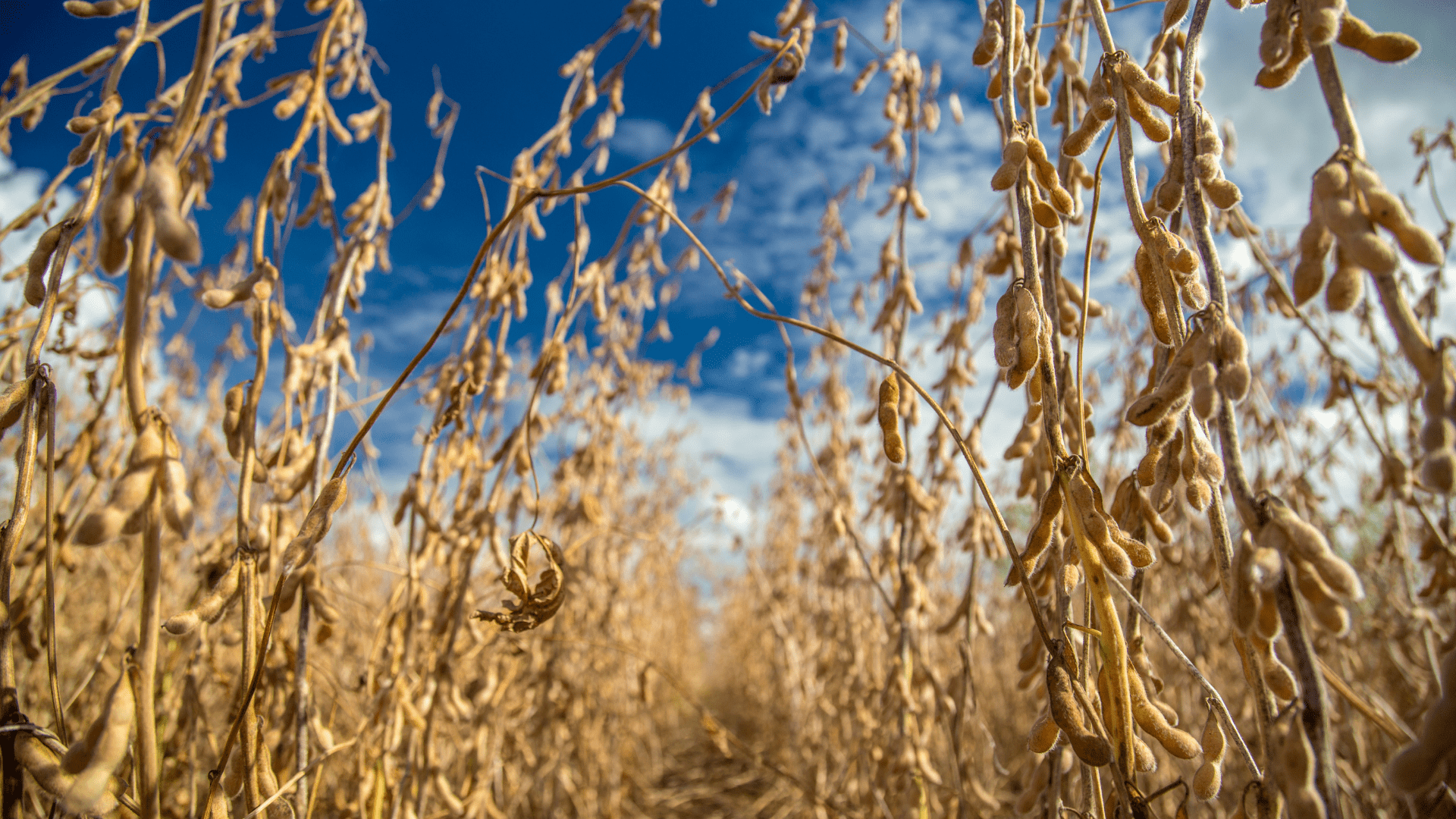Impact of Sow Health on Piglet Performance
The health of the sow plays a crucial role in the development and performance of piglets, influencing various aspects from gestation to the postnatal period. […]
- 21/10/2024
- ler mais...

Animal nutrition is constantly advancing to keep up with all the demand for animal protein and more sustainable production. According to data from FAO (Food and Agriculture Organization of the United Nations) in 2050, the world population will be 9.8 billion people, demanding an increase in production of 200 million tons of animal protein to meet consumption.
In this context, alternative ingredients such as Soy Protein Concentrate (CPS), with high biosecurity, palatability and digestibility, and with less production of polluting residues will be essential to meet this increase in scale and quality.
Soy Protein Concentrate (CPS) is an ingredient, with a crude protein content of around 60%, and digestibility of 93%. Containing 92% less of allergenic oligosaccharides removed in the alcoholic extraction process. During the process of obtaining the Soy Protein Concentrate, the allergenic proteins are denatured and their anti-nutritional properties eliminated, thus reducing energy expenditure with cell renewal and reducing the use of antibiotics resulting from the lower inflammation and intestinal infections.
In addition, the Soy Protein Concentrate has high digestibility, reducing the number of excreta, one of the passives of poultry and swine to environmental pollution. Likewise, it has high palatability allowing the full development of the intestinal villi, increasing the villo-crypt ratio, absorbing more nutrients, and minimizing waste.
In contrast, the factors that limit the use of soy in animal nutrition are the presence of several antinutritional factors, such as antigenic proteins, such as Glycinin and B-Glycinin. These factors cause morphological changes in the intestinal villi, reducing the villo-crypt ratio, decreasing the nutrient absorption area and increasing the energy expenditure in carrying out the protein turnover. It still has oligosaccharides that are also antinutritional to monogastrics, being raffinose and stachyose the main ones, plus a range of antinutritional factors (Phytic acid, saponins, protease inhibitors, etc.).
However, raffinose and stachyose are not digested in the small intestine due to the non-production of the necessary enzymes. However, when they pass into the large intestine, they are fermented, favoring the production of gases, causing flatulence and abdominal swelling. In addition, these carbohydrates increase the viscosity of the diet by decreasing the contact surface of the nutrients with the enzymes thereby reducing feed efficiency.
CPS is also an alternative to ingredients of animal origin in the formulations, providing improvements in zootechnical indexes throughout the life of the animal, with economic benefits and meeting the demand of the most demanding markets for safe and modern food production.
The health of the sow plays a crucial role in the development and performance of piglets, influencing various aspects from gestation to the postnatal period. […]
Diagnosing risks and controlling critical points in the production process of feeds and mineral supplements is an essential tool for improving factory operations. Through these […]
Aquaculture and shrimp farming in Brazil have gained prominence due to their high production potential, driven primarily by the continent’s abundant water resources and favorable […]
Dietary fiber is an important component of the raw materials used in the production of feeds for the monogastric market. It is primarily found in […]
It has been proven that the broiler intestinal health plays a crucial role in sustainable production, directly impacting the well-being and efficient performance of these […]
Tannins are a heterogeneous group of polyphenolic polymers distinguishable into three main groups: hydrolyzable tannins (HTs), condensed tannins (CTs), and flavotannins (FTs). HT and CT […]
In industry, propionic acid is commonly used as a food and feed preservative and as a crucial chemical intermediate in the synthesis of cellulose fibers, herbicides, perfumes, cosmetics, colorants, artificial fruit flavors, esters used as solvents, plasticizers, rubber products, and pharmaceuticals. Below are some of the diverse industrial applications of Propionic Acid.
Ammonium chloride in animal production is used as an economical alternative to other inputs, such as urea in cattle diets. However, its applications are not limited to this, so let’s first understand what this compound is to better discuss its uses.
Wheat is a winter cereal from the Poaceae family with a millennia-long presence in the traditions, food security, and economic stability of people around the […]
Impact of Traceability on Consumers’ Daily Lives Grains are important sources of nutrients for people around the world. They can be used in their natural […]
The study of tannins, their applications, and their benefits to animals is advancing vigorously, opening horizons that involve nutritional strategies and the concept of one […]
1) Greater automation and process control: Dosing systems are usually composed of a tank, which can be installed outside the factory premises, saving internal space. […]
Nutritional and technological additives in balanced diets have been one of the most developed fronts in animal production chains nowadays. Many of these additives are […]
The search for sustainable production combined with the highest levels of quality demand by consumers is a challenge that nutritionists have strongly embraced. The production […]
At the end of the last article entitled – Relationship between Clostridium perfringens and the immune system of broilers – it was said that a […]
Clostridium perfringens (CP) is a Gram-positive, spore-forming, anaerobic bacterium that is widely distributed in nature and commonly found in soil, dust, animal production sites such […]
Methanic acid, popularly known as formic acid, was obtained for the first time in 1500, through a steam-drag distillation of solutions containing ants, a process […]
Feed Production Scenario Brazilian agricultural production, influenced by high commodity prices and several other factors such as the appreciation of the dollar and the heating […]
To keep up with the movement of an increasingly demanding market, where consumers are always looking for the best products and services, organizations need to […]
For years, the interactions between animal nutrition, hence well-nourished animals, and reproduction, have been studied. And there is scientific evidence that reproduction is compromised when […]
The world is undergoing intense transformations since the popularization and facilitation of access to information. This rapid globalization caused outdated industries within this context to […]
We have already superficially addressed the problems related to the use of antibiotics as growth promoters. Consequently, we talked a little about possible alternatives such […]
Ascorbic acid Ascorbic acid, commonly called vitamin C, refers to compounds that exhibit L-ascorbic acid activity and is part of the group of water-soluble vitamins. […]
Conjugated linoleic acid – CLA is found naturally in many products. It was originally discovered as an anti-cancer component. The largest natural source comes from […]
Antinutritional factors are substances that, even in a vestigial state, reduce or prevent the use of a nutritional element. These antinutritional factors are mostly secondary […]
First of all, several mineral elements are essential for the growth, reproduction, and health of animals. Those required in larger quantities are called Macrominerals. Within […]
Vitamins are complex molecules found naturally or artificially in foods or as precursors to them. They are part of several metabolic processes and are required […]
Choline (Pure) is an organic compound belonging to the group of quaternary ammonium salts, being chemically called 2-hydroxyethyl-trimethylammonium. Known as a B-complex vitamin, it does […]
In pig production, weaning piglets is a critical moment that requires a lot of attention. In the meantime, the animals are relocated in new lots, […]
Vitamin D belongs to the group of fat-soluble vitamins, and many consider it a hormone due to its functions. Its main role is linked to […]
Among meat-producing animals, chickens stand out for their higher GMD, in terms of body weight and the best feed conversion, being considered a relatively sustainable […]
Mathematical modeling is the art of correlating attributes of an application area in treatable mathematical formulas, whose theoretical and numerical operational analyzes provide useful insights, […]
Tannins are substances resulting from secondary, or special, metabolism of plants, and for a long time, it was seen as an anti-nutritional factor present in […]
Animal nutrition is constantly advancing to keep up with all the demand for animal protein and more sustainable production. According to data from FAO (Food […]
Essential oils (EOs) are extracted from plants through the technique of steam dragging, the vast majority of times, and also by pressing the pericarp of […]
Organic acids are substances that have a carboxylic group. In recent years, attention has been given to them as alternative additives to antibiotics, acting as […]
With the crisis of the new coronavirus (SARS-CoV-2), the eyes of the world have turned again to animal production. Having drawn attention to health issues. […]
The soy protein concentrate is produced from defatted bran by a process of extracting soluble carbohydrates by washing the flakes with an alcohol-water solution (Hydrated […]
Soy has been grown for thousands of years in Asia, where the grain is eaten whole and is also used as an ingredient in tofu […]
